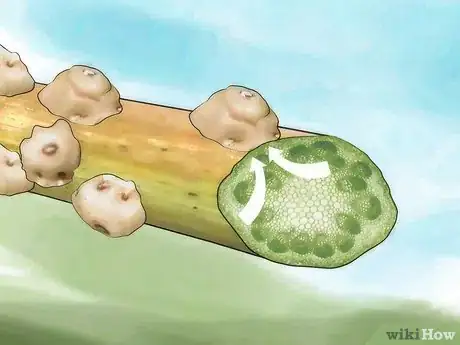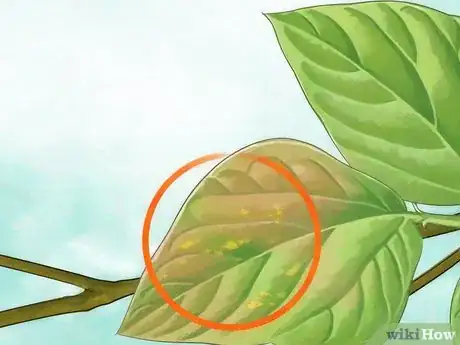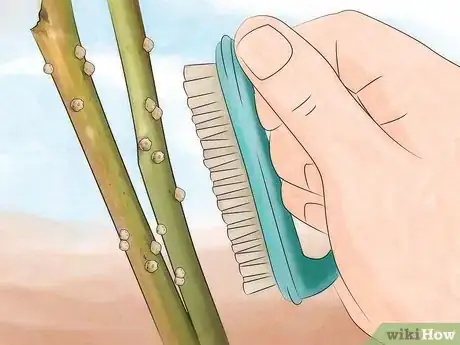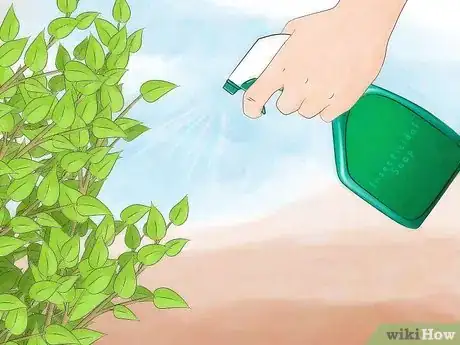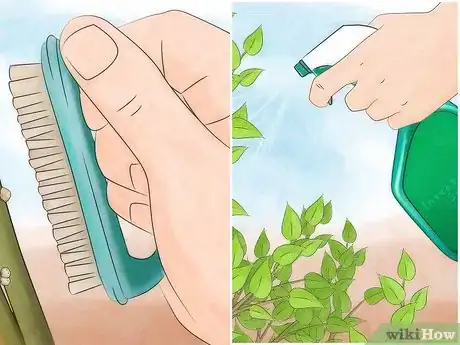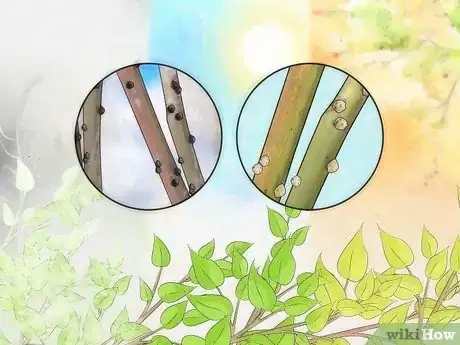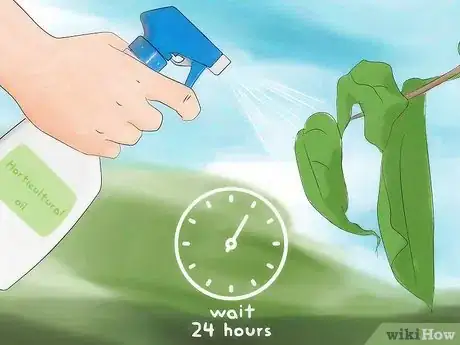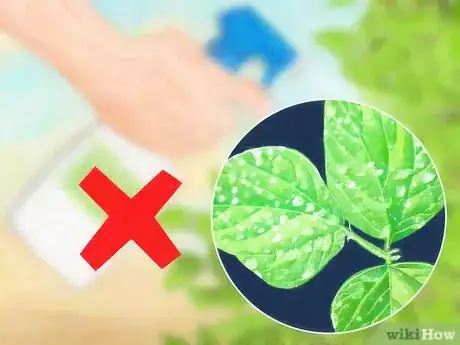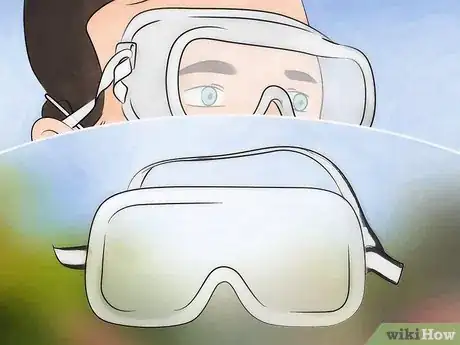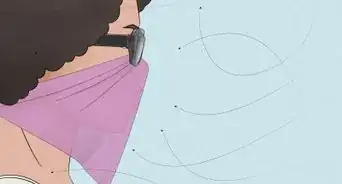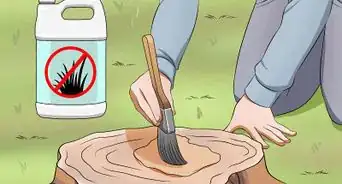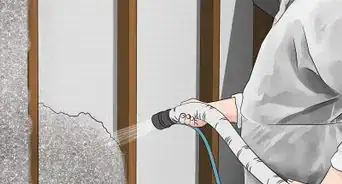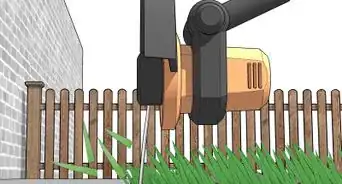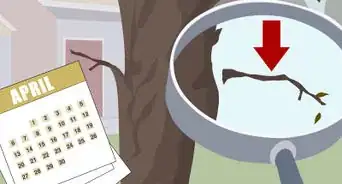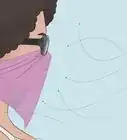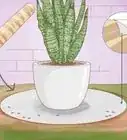wikiHow is a “wiki,” similar to Wikipedia, which means that many of our articles are co-written by multiple authors. To create this article, volunteer authors worked to edit and improve it over time.
There are 7 references cited in this article, which can be found at the bottom of the page.
This article has been viewed 255,710 times.
Learn more...
Scale insects (Hemiptera spp.) are small, about 1/8 inch long, oval and flat.[1] They are members of the “true bug” insect family, along with bed bugs. These pests can do serious damage to your garden, so if you find them lurking about, it is helpful to know how to get rid of them.
Steps
Recognizing Scale Insects and the Damage They Cause
-
1Look for adult scales. Scales are usually off-white, tan or brown but can also be other colors. Most of them have a smooth, flat covering but some may look cottony or fluffy. The adults do not move.
-
2Identify ‘crawlers’. The young scales, called crawlers, have legs and will move very slowly, or are blown by the wind, to a spot on a plant that they like. Crawlers are often not the same color as the adults of the species. Cottony cushion scales, for example, are off-white but the crawlers are orange.
- After the crawlers get to their spot, they will attach to the leaf or stem and eventually lose their legs.
Advertisement -
3Familiarize yourself with what scales do when they get on a plant. When they attach to the plant, they pierce it with their mouths and suck the plant juices out.
- Scales can become a problem for gardeners all over the world.[2] They survive the winters on plant leaves and stems only to reproduce again when the weather warms and make a meal out of any nearby garden plant.
-
4Spot signs of scale damage. The first symptoms are yellow, falling leaves. Eventually twigs and entire limbs die and the tree bark cracks and oozes sap. Soft scales will do some damage but they rarely do enough damage to kill a plant. The most serious problem they cause is honeydew which is a clear, sticky secretion they leave behind as they feed.
- Aphids, small, soft-bodied insects excrete honeydew as well. They are usually green or red, although they can be nearly any color, and are more mobile than scale insects.
- Sooty mold, a fungus, will often grow on the honeydew causing unsightly dark spots on the leaves and interfering with the plant’s ability to absorb sunlight.
Removing Scales on Houseplants
-
1Rub the scales off your plant. Scales can attack houseplants, even if they are never put outdoors. They often go unnoticed at the greenhouse or store where the houseplant is purchased and flourish on the plant after it is brought home. Remove scales from houseplants by rubbing them off with an old toothbrush, your thumbnail or a cotton swab dipped in Isopropyl rubbing alcohol.[3]
-
2Try using insecticidal soap. Insecticidal soap can also be sprayed on houseplants to kill scales. Mix about 5 tablespoons of insecticidal soap or a very mild dish soap into 1 gallon (3.8 L) of water.[4]
- Pour the soap into a spray bottle and spray the plant, including the undersides of the leaves and stems, until the soap solution begins to drip. Repeat the treatment every four to seven days until the scales are gone.
-
3Avoid using regular house soap. Do not use laundry soap, automatic dishwasher soap or highly concentrated dish soap that has additives or antibacterial ingredients. They can damage the plant leaves, causing discoloration and leaf tissue damage.
Removing Scales from the Garden
-
1Use the same methods as those used for houseplants when fighting a small-scale attack. Scales are most prevalent outdoors where they infest all species of trees, shrubs, perennial plants and annual plants. When the plants are small enough and infestation is not too severe, get rid of the scales in the same way as you would houseplants.[5]
- Scrub the scales off with your nail or an old toothbrush.
- Spray the plant with an insecticidal spray every four days or so.
-
2Prune away parts of the plant that are infested with scales. When the scale infestation is severe, use sharp hand pruners or loppers to trim off branches and leaves which hold high concentrations of these insects.
- Make the pruning cut about 1/4-inch above a leaf or at the base of the branch.
- Use a garden hose to spray off the pruners or loppers before using them on another plant to remove any scale insects that may be left on them.[6]
-
3Spray the plants with horticultural oil. This is also commonly called summer oil or dormant oil, to kill any remaining scale insects. Spray the oil on the tops and bottoms of the leaves as well as the stems. There are various horticultural oil formulas on the market that are all equally good. They are commonly mixed at a rate of 2 to 4 teaspoons per gallon of water, but this varies.
- Read and follow the manufacturer’s recommendations carefully. Shake the spray bottle vigorously to mix it initially and every few minutes while spraying to keep the oil mixed with the water.
-
4Keep the seasons in mind. Spray the plants in early spring to kill any scale insects that have survived the winter before new growth starts.[7] During the summer, spray the plants for scales in June, July and August but only if they return after the early spring treatment.
- Horticultural oils work by smothering the scale insects that are on the plant when it is sprayed. The treatment may have to be repeated after a week or two.
Horticultural Oil Precautions
-
1Test the spray on a leaf or two. Wait 24 to 36 hours to make sure the plants are not sensitive to horticultural oil. Some plants, like junipers, cedars and Japanese maples can be damaged by oil.
- If there does not appear to be bleaching or yellowing on the test leaves, go ahead and spray the whole plant.
-
2Avoid windy days. Do not spray plants with horticultural oil when it is windy as the oil could drift to other plants that do not need to be sprayed and damage them.
-
3Do not spray plants when the leaves are wet. This is because the oil will not make good contact with the plant and could be washed off before it kills the scales.
-
4Avoid using the oil on humid days. When the relative humidity is 90 percent or higher, horticultural oil should not be sprayed on plants because it will not evaporate quickly enough. If the temperature is over 100 °F (38 °C), the plant leaves could be damaged.
- Alternatively, if the temperature is below 40 °F (4 °C) the oil will not cover uniformly, making it much less effective.
-
5Avoid using the oil on certain plants. The leaves on plants that are stressed or wilting from lack of water are more likely to be damaged when sprayed with horticultural oil. In addition:
- Do not spray oil on young, new plant stems or leaves as it will likely damage them.
- Plants that have been treated with sulfur for fungal diseases within the previous 30 days should not be treated with horticultural oil.[8] The oil could cause a plant-damaging reaction when it comes in contact with the sulfur.
-
6Wear protective glasses when using the oil. Horticultural oil is not very toxic to people or animals but it can irritate the eyes and skin.[9]
Community Q&A
-
QuestionWill the scales die off in the winter, or do I have to spray?
 Pokemonmaster7Community AnswerYou have to spray the plant in winter because some scales will survive the cold.
Pokemonmaster7Community AnswerYou have to spray the plant in winter because some scales will survive the cold. -
QuestionWhat are insects whose damage looks like soot?
 Community AnswerIt's mold. The mold grows on the sappy excrement from the scale insects. It's called sooty mold. Use dormant oil.
Community AnswerIt's mold. The mold grows on the sappy excrement from the scale insects. It's called sooty mold. Use dormant oil. -
QuestionI have a large hedge with scale, can I use a watering can instead of using a spray?
 Community AnswerIt's important to get to the tops and bottoms of the leaves and the stems, and a watering can will only get the top surface. Better to use a spray bottle or attach a spray bottle that's made to go onto a hose.
Community AnswerIt's important to get to the tops and bottoms of the leaves and the stems, and a watering can will only get the top surface. Better to use a spray bottle or attach a spray bottle that's made to go onto a hose.
References
- ↑ http://www.missouribotanicalgarden.org/gardens-gardening/your-garden/help-for-the-home-gardener/advice-tips-resources/pests-and-problems/insects/scale/scale-outdoors.aspx
- ↑ https://www.rhs.org.uk/advice/profile?PID=224
- ↑ http://www.missouribotanicalgarden.org/gardens-gardening/your-garden/help-for-the-home-gardener/advice-tips-resources/pests-and-problems/insects/scale/scale-indoors.aspx )
- ↑ https://extension.colostate.edu/docs/pubs/insect/05547.pdf
- ↑ http://www.missouribotanicalgarden.org/gardens-gardening/your-garden/help-for-the-home-gardener/advice-tips-resources/pests-and-problems/insects/scale/scale-outdoors.aspx
- ↑ http://pss.uvm.edu/ppp/articles/cleaning.html
- ↑ http://www.missouribotanicalgarden.org/gardens-gardening/your-garden/help-for-the-home-gardener/advice-tips-resources/pests-and-problems/pesticides/oil-sprays.aspx
- ↑ https://extension.colostate.edu/docs/pubs/insect/05569.pdf
- ↑ http://www.missouribotanicalgarden.org/gardens-gardening/your-garden/help-for-the-home-gardener/advice-tips-resources/pests-and-problems/pesticides/oil-sprays.aspx
About This Article
To get rid of scale insects from your plants, rub their stems with an old toothbrush or a cotton swab dipped in Isopropyl alcohol, which will kill any insects on them. If you have a heavy infestation outdoors, prune away the stems with the most scales. Then, use a garden hose to wash away any loose insects. Once you’ve rinsed your plants, spray a horticultural oil on a leaf or 2 and wait 36 hours to make sure your plant isn't sensitive to the oil. If there are no signs of bleaching or yellowing on the leaves, spray the whole plant with the oil to kill any remaining insects. You may have to repeat the process after a week or 2 if there are still scale insects. For more tips, including how to identify scale insects in your garden, read on!


